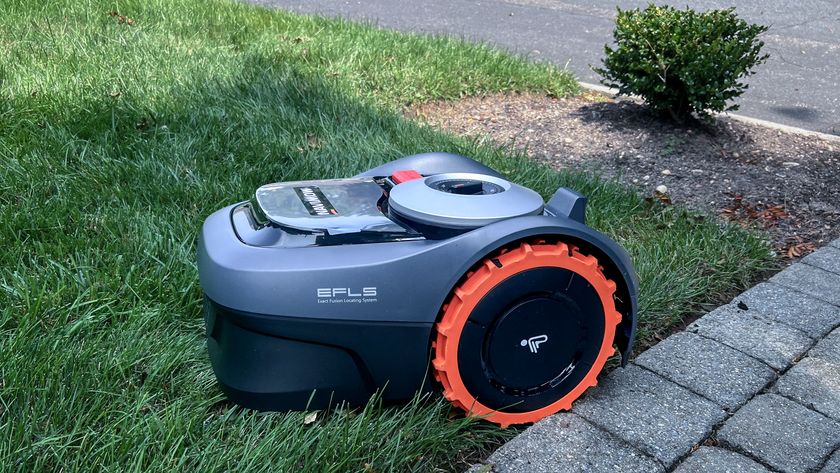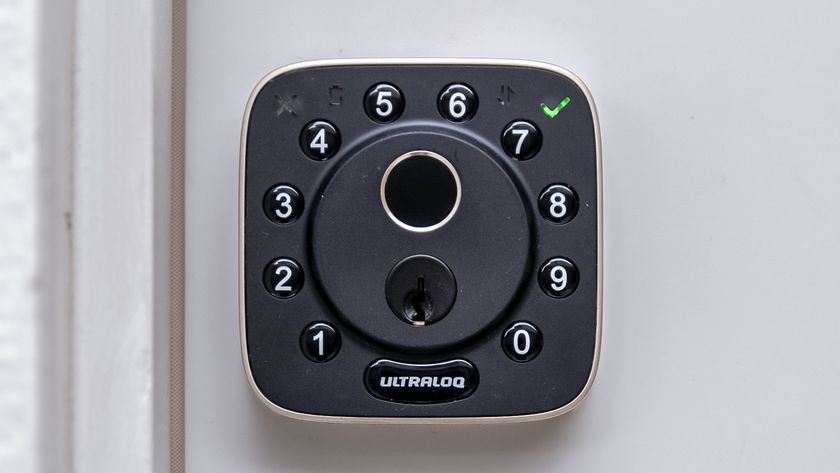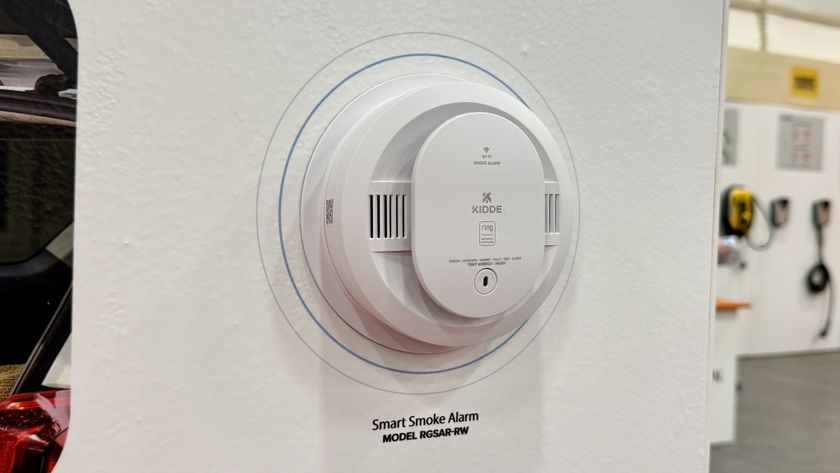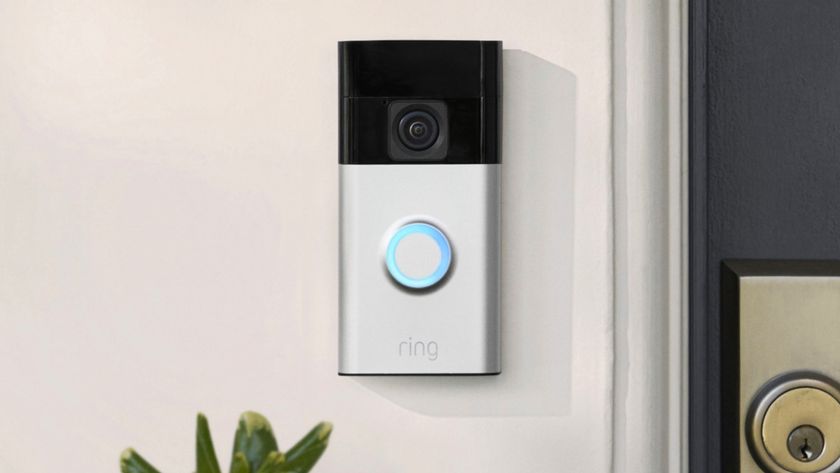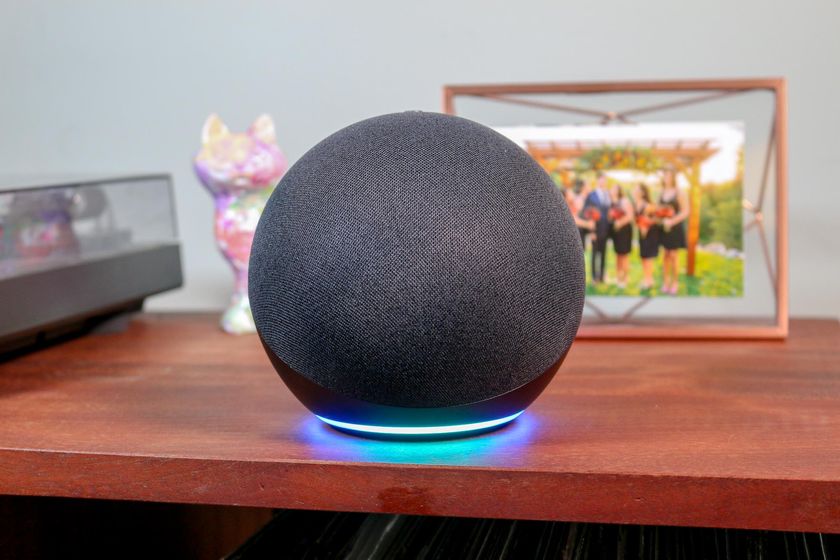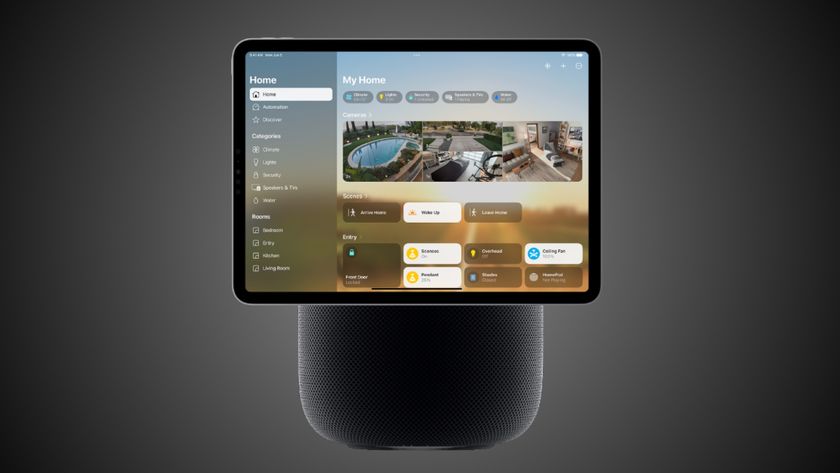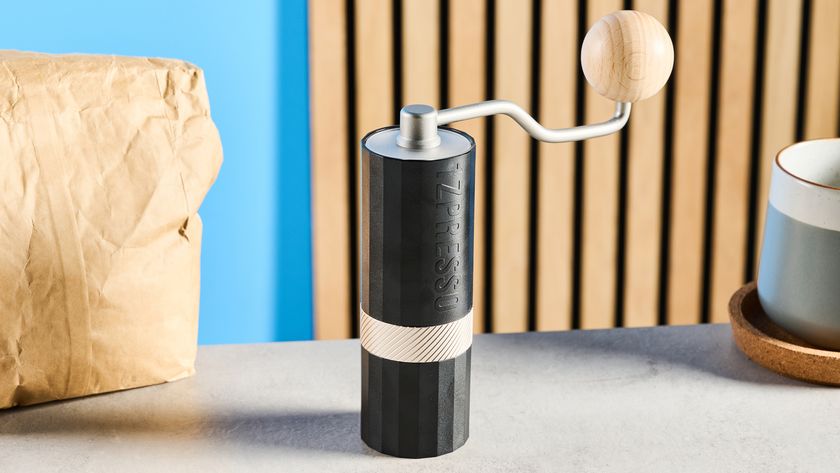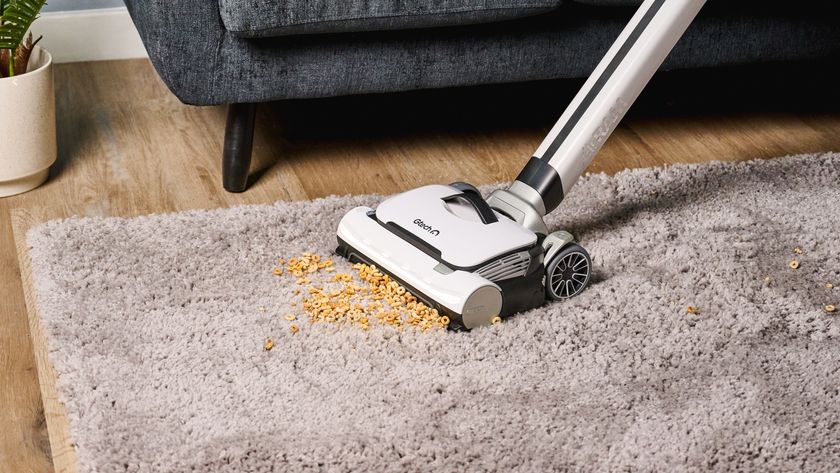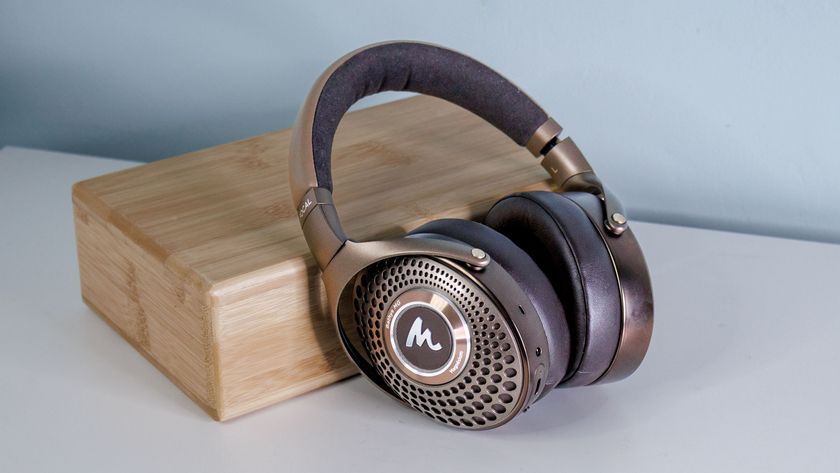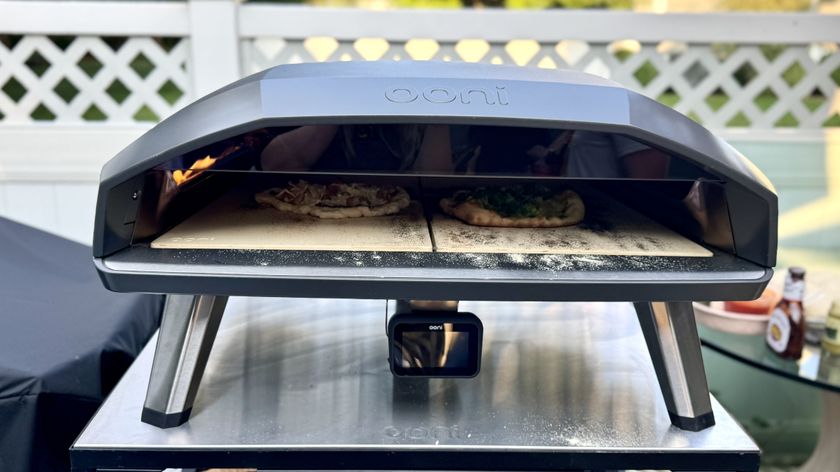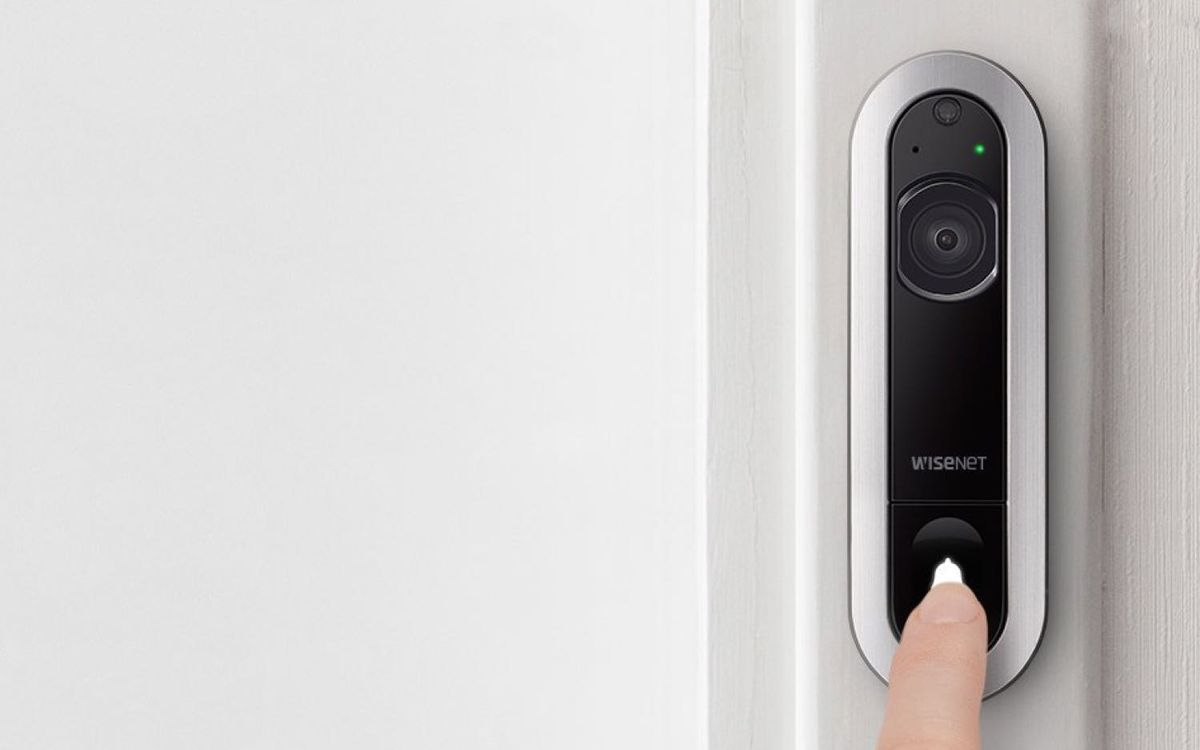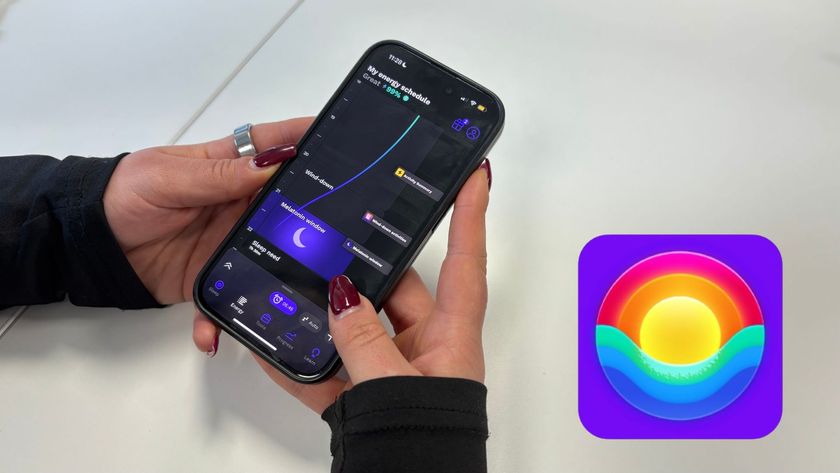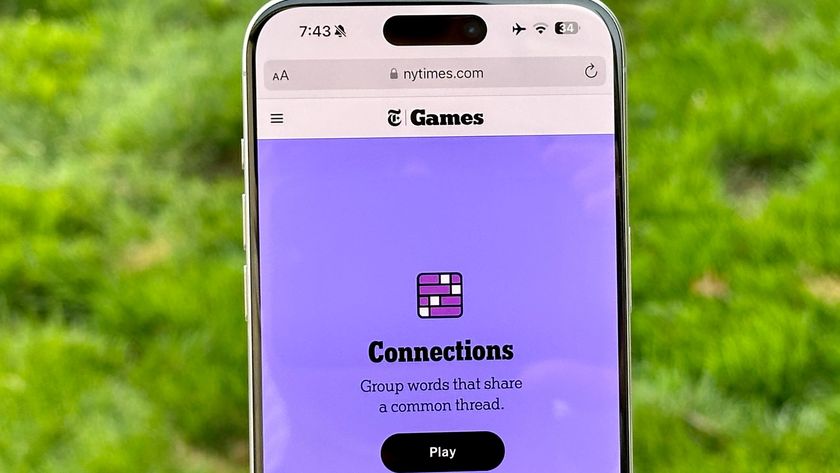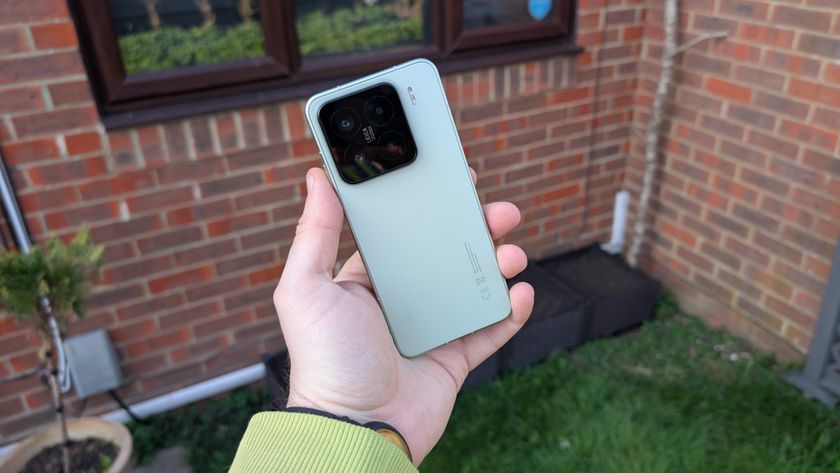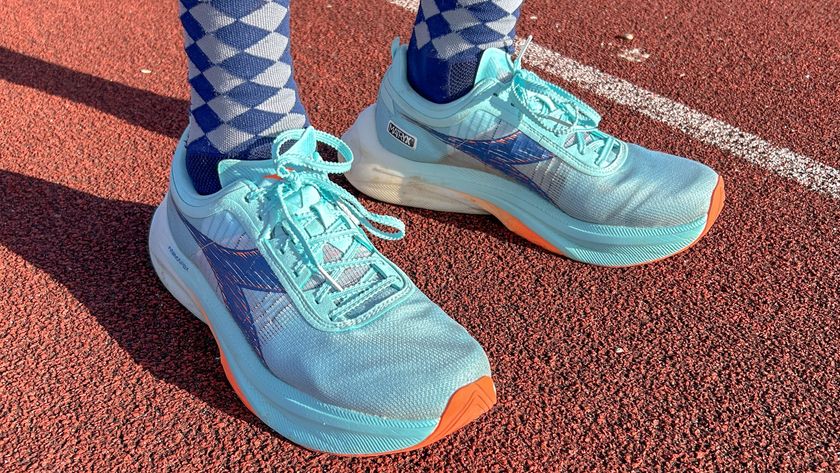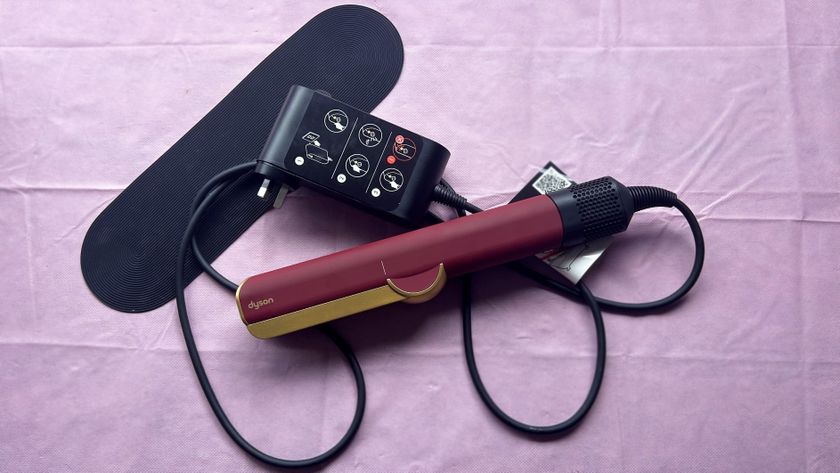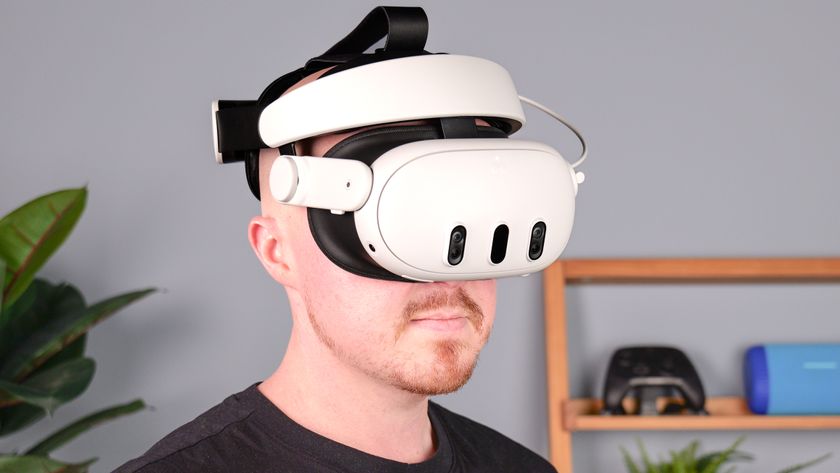Tom's Guide Verdict
Although it offers free facial recognition, this signature feature of the Wisenet D1 doorbell cam doesn't work very well.
Pros
- +
Good video quality
- +
Customizable motion zones
- +
Low storage fees
- +
Lots of features that work without a subscription
Cons
- -
Poor facial recognition
- -
Smaller field of view than its competitors'
- -
Hardwired only
Why you can trust Tom's Guide
The Wisenet SmartCam D1 video doorbell is supposed to not only let you know someone's at the door but also recognize them. This $229 device delivers high-resolution video and offers free features that other companies charge for. Unfortunately, however, facial recognition — which Wisenet markets as the D1's signature feature — doesn't work nearly as well as it does on our favorite video doorbell, the Nest Hello.
Design and Installation
The D1 has a nice, slim design (5 x 1.7 x 1.1 inches), which means it will fit easily on any door frame, but there's no room for a built-in battery. You'll need to install it as a hardwired doorbell, with 16 to 24 volts required. You also have to install the Power Stabilizer Kit, a small module that gets put in the chime box inside your house. It's not difficult, but it is an extra step that some rival doorbells don't require.
Unlike many other video doorbells that attach to a mounting plate on your doorframe (our preferred method), the D1 attaches directly to the house. The D1's screw holes are very deep, so I couldn't use my favorite screwdriver because it was too bulky to fit. (Wisenet includes a cheap screwdriver with the doorbell.) I also worried that if I stripped a screw, I'd have no way to get the doorbell off of my house.
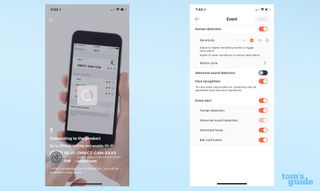
The D1 doesn't come with a wedge piece that can help you angle the doorbell's camera toward the center of the door, which is something that Ring's and August's doorbells include. A wedge piece might have helped the viewing angle and facial recognition, but more about that later.

Once you have the doorbell screwed to the side of the house, you attach one of three plastic frames to cover the screws. The frames snap on and then are locked down with a tiny security screw on the bottom, and they mimic a gold, silver, or black metallic finish. But they're just thin metallic plastic and not very sturdy.
Specs
| Video resolution | 1600 x 1200 |
| Field of view | 150 degrees (125 degrees horizontal, 94.8 degrees vertical) |
| Works with | Alexa |
| Size | 1.7 x 1.1 x 5 inches |
| Wired/Battery | Wired |
| Starting storage fee | $4.99/month, $50/year for 30 days of video |
Faulty Facial Recognition
The D1's marquee feature is facial recognition; when people ring the doorbell, the camera is supposed to recognize their faces. The viewing angle is 150 degrees diagonally, which, in this case, breaks down to 125 degrees horizontally and 94.8 degrees vertically. That's a little less than the 160-degree angle on the Nest Hello, which did a much better job of recognizing faces.

The D1's documentation recommends mounting the camera so the lens is at eye level and the camera faces the people approaching straight on. But that's pretty tough when you have to mount it where your old wired doorbell was. The documentation also notes that facial recognition is tougher when the faces are angled side to side or downward, or when they move suddenly.
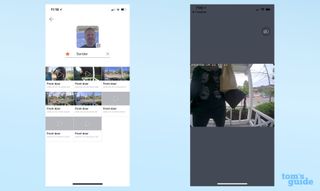
For example, the D1 only detected the faces of my son and his friends, who are all about 6 years old and 4 feet tall and tended to stare right at the camera as they rung the doorbell. The D1 recognized my husband and me when we bent down to look directly into the camera, but it didn't recognize us when we just walked in and out of the door — our heads often got cut off in the view. The D1 was able to pick up the faces of delivery people, but only when they bent down to place packages on the doormat. The Nest Hello, which was mounted in the same spot, had no such difficulties recognizing our faces.
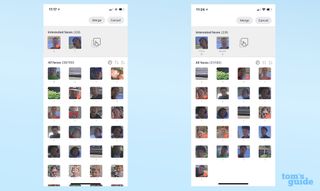
After the first few weeks, the D1 was better at picking up faces farther away (it's supposed to work to about 16 feet), but for every face it caught, it missed a few more. It didn't get my brother-in-law, cousin, uncle, uncle's girlfriend, friend's husband or friend's 3-year-old, all of whom visited more than once. The D1 was only successful at recognizing another friend — a frequent visitor — once.
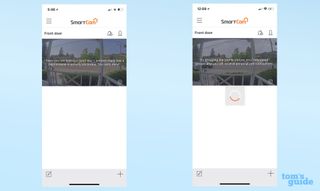
The D1 also kept flagging my husband and me as new people, even after I dragged our photos to the app's Interested Faces section and tagged us with our names. I kept merging the photos into the stack of ones I'd already identified, hoping the D1 would learn eventually, but after more than two months, the only person it ever identified by name upon their arrival was my son. And the D1 had a handful of false positives, too, detecting faces that were really a bush, a car door and the house across the street.
MORE: Nest Hello vs. Ring Video Doorbell Pro: Why Nest Wins
Wisenet's tech support recommended I turn up the camera's brightness setting a notch to help it see people's faces better, but even after I tried this, there was no improvement.
Other Features
The D1 supports motion zones, in case you don't want to be notified of people on the sidewalk but just in the driveway and porch, for example. You can create up to three motion zones and adjust the sensitivity of the human detection. The camera can even alert you to the sound of glass breaking, a siren or loud screaming; we tested it with screaming, and it worked well. (Sorry, neighbors!)

Wisenet's SmartCloud subscription starts at $5 per month (or $50 per year) for 30 days of doorbell recordings. A $20-per-month (or $200-per-year) subscription gets you 180 days of recordings. Even without it, you still get most of the best features, including push notifications, human detection and facial recognition, motion zones, abnormal sound detection, and two-way audio. Other doorbells, such as Nest and Ring, require you to subscribe to a plan to get features such as facial recognition; of course, other doorbells also offer much better facial recognition.
Performance
The D1's videos look great, with high dynamic range (HDR) that lights up areas of the frame that would naturally be in shadow without blowing out lighter areas in the process. The end result is video that looks a little unnatural, but you get plenty of detail to identify people's faces, clothing, the color of their car and so on. Nest Hello has HDR too, and we appreciate the feature.
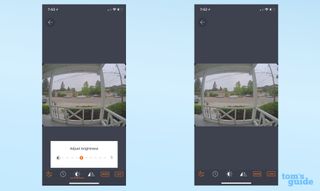
Thanks to dual-band Wi-Fi, the D1 never lost its connection and uploaded videos to the cloud quickly. The live feed starts up within a few seconds when you launch the app, too. You can choose low, medium or high resolution, maxing out at 1600 x 1200, and the video looked great even at low resolution.
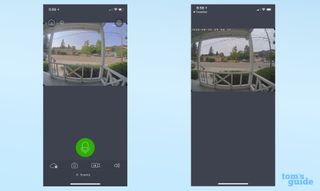
The D1's companion app could use some design improvements. It uses icons to label everything, but sometimes those icons aren't immediately clear. The cloud icon on the live feed, for example, goes to your cloud recordings, but in the main menu, a very similar cloud icon is where you can adjust your SmartCloud plan. (Plans range from $5 to $20 a month.)
One more interesting note: The D1 runs a little warm to the touch. One day over the summer, a food-delivery driver used the door's antique knocker instead of ringing the bell, and when I opened the door, he told me he thought it was too hot to touch. It was definitely warm — I wouldn't call it hot — but it must have surprised him.
Smart Home Integration
The D1 supports Alexa. You can ask Amazon's assistant who visited today to get a rundown of people it recognized. This feature wasn't useful in my tests, however, because the camera recognized barely anyone. You can also ask Alexa to "show me the front door" to see the live view on an Echo Show or Fire TV.
Bottom Line
The Wisenet SmartCam D1 doorbell delivers quality video and gives you facial recognition for free. If only it worked with any consistency. Even after weeks of testing, the D1 still had trouble knowing who was who.
If you're after facial recognition, check out the Nest Hello. If you find the Alexa integration appealing, the Ring and August doorbells have that, too. The D1 might be worthwhile if your doorbell is already mounted relatively high and you don't want to pay subscription fees. Otherwise, you can pass on this video doorbell.
Credit: Tom's Guide

Susie has been a technology journalist for over 15 years and is a contributing writer for Tom's Guide. She specialises in Apple and covered the keynote in 2007 when Steve Jobs unveiled the iPhone. Aside from Apple, she also covers fitness wearables, kids' tech, and smart home products, always with the goal to help people decide how—and if—all these new products fit into their lives.
Susie's work has appeared in Macworld, iMore, Mac|Life, TechRadar, PCWorld, TechHive, Greenbot, Tap!, Mom365, and CafeMom.
